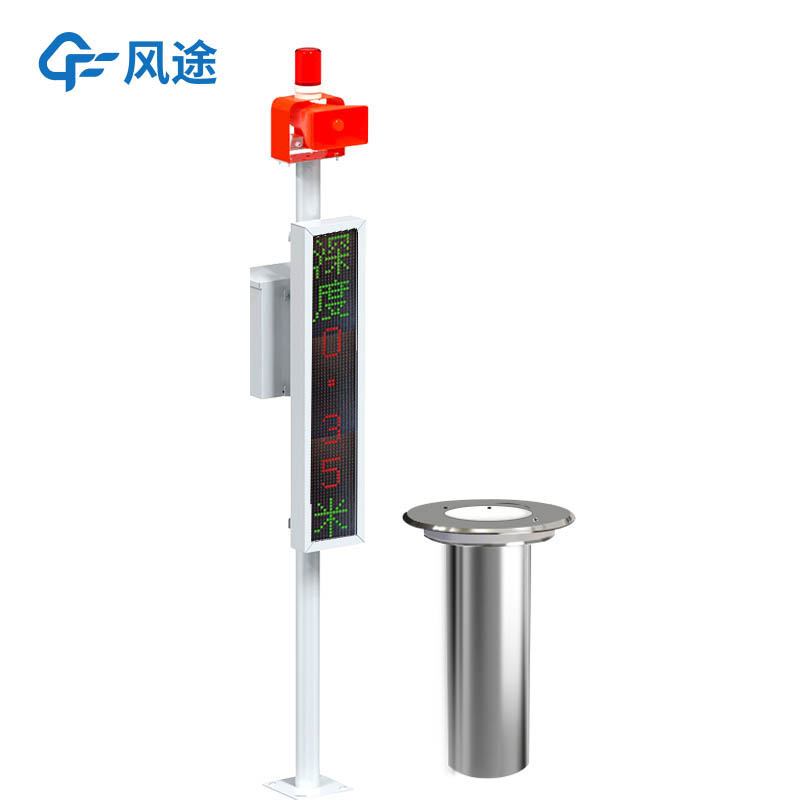Tianqiong Sensor IOT Technology Co., Ltd
Sales Manager:Ms. Emily Wang
Cel,Whatsapp,Wechat:+86 15898932201
Email:info@fengtutec.com
Add:No. 155 Optoelectronic Industry Accelerator, Gaoxin District, Weifang, Shandong, China

Sales Manager:Ms. Emily Wang
Cel,Whatsapp,Wechat:+86 15898932201
Email:info@fengtutec.com
Add:No. 155 Optoelectronic Industry Accelerator, Gaoxin District, Weifang, Shandong, China
time:2025-06-20 09:11:15 source:Weather Station viewed:346 time
Urban waterlogging is an invisible "underground threat".
In recent years, extreme rainfall events have occurred frequently, and many cities have suffered severe waterlogging. News of traffic paralysis, flooded vehicles, and trapped residents are not uncommon, which not only seriously affects the normal life of residents but also threatens life and property safety.
How is the crisis of urban waterlogging formed? The "culprit" is road water accumulation. However, the convergence of water is not accidental, but the result of the combined action of multiple factors.
First, the urban underlying surface is mostly impermeable cement and asphalt pavement, so rainwater cannot penetrate quickly, leading to an increase in surface runoff.
Second, the design standards of urban drainage systems are lagging, pipes are aging, and drainage capacity is insufficient, making it difficult to cope with short-term heavy rainfall.
Third, the occupation and landfilling of natural water systems in urban construction have destroyed the original rainwater storage capacity, making it impossible for rainwater to be discharged in time and further leading to water convergence.
When the water accumulation depth reaches a certain level, waterlogging disasters will be triggered.
From "water control" to "intelligent water management", the governance of urban waterlogging needs to combine engineering measures and intelligent means.
Engineering measures are the basis for governing urban waterlogging. Widening and dredging drainage pipes, building storage tanks, and sponge city facilities can directly enhance the city's drainage and water storage capabilities and reduce the formation of water accumulation from the root. However, engineering measures have certain limitations and are difficult to monitor the dynamic changes of water accumulation in complex urban environments in real time. Intelligent means just make up for this deficiency. By deploying water accumulation monitoring equipment and building an intelligent management platform, we can grasp the urban waterlogging situation in real time, quickly analyze and issue warnings, assist urban managers in making scientific decisions, reasonably dispatch resources, and improve the efficiency of waterlogging response.
Road Water Accumulation Monitoring Station ——FT-JS1
FT-JS1 Road Water Accumulation Monitoring Station is composed of a host, buried water accumulation monitor, power supply system, pole bracket, display screen, and cloud platform, realizing real-time monitoring and early warning of urban road water accumulation.
The system buries water level monitor sensors in low-lying sections and water-prone areas of urban roads to detect changes in water accumulation levels in real time, and transmits the collected data to the monitoring host. After the monitoring host processes and analyzes the data, it uploads the results to the cloud platform for viewing and management by relevant management departments.
The cloud platform can integrate data from each monitoring point to form a comprehensive urban water accumulation monitoring network, allowing municipal management departments to clearly grasp the water accumulation situation in all corners of the city.
In summary, the governance of urban waterlogging needs to organically combine engineering measures and intelligent means to form a systematic solution to better cope with urban waterlogging problems.

The Snow Level Sensor is a high-precision, high-reliability environmental monitoring device based on ultrasonic distance measurement principles, specifically designed for automated and continuous measurement of snow depth.Its working mechanism is based on the "time difference method" in ph...
The working principle of Ground Penetrating Radar (GPR) is based on the propagation characteristics of electromagnetic waves. It emits high-frequency electromagnetic waves into the ground. When these waves propagate through underground media, once they encounter interfaces between different media—s...
Wind speed monitoring is not only crucial for the promotion of a green lifestyle but also directly affects our daily travel safety and the production environment. When the wind speed is too high, it not only poses a threat to driving safety but may also trigger natural disasters. Therefore, the prec...
Online ORP Meter is an instrument capable of real-time online monitoring of oxidation-reduction potential (ORP) in water, also known as an online oxidation-reduction potential analyzer. It is widely used in industrial and laboratory fields, allowing for rapid detection of ORP values. It is suitable for on-site testing or continuous real-time monitoring of surface water, tap water, etc. Its main applications include water treatment plants, water supply networks, swimming pools, cooling water systems, and various water treatment projects....